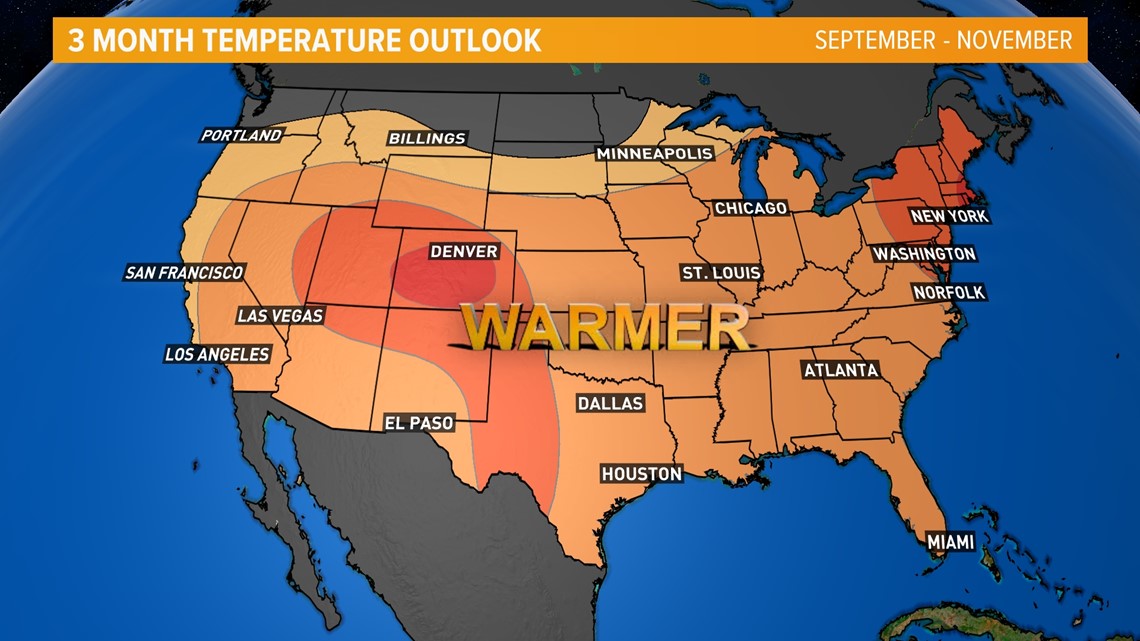NORFOLK, Va. — Break out those pumpkins: It's meteorological fall!
For many, September 22 is considered the start of fall; however, that’s “astronomical” fall. September 1 is the start of meteorological fall.
Meteorologists divide the four seasons into three-month periods, which more align to the temperatures each season. This means “meteorological” fall consists of the months of September, October, and November. Meteorological winter will begin on December 1.
So, what kind of weather are we expecting this fall? According to the National Oceanic and Atmospheric Administration’s Climate Prediction Center, we are looking at warmer-than-average weather across much of the country.
The darker shades of orange indicate areas where it will be more likely to see the hot weather, including Colorado and the Northeast.


As far as precipitation, the picture isn’t quite as clear along the coasts.
The central United States will likely see drier-than-average weather. But for much of the East and West, we are looking at equal chances of above- or below-normal rainfall.
Coastal Carolina and the Pacific Northwest have a slight chance of above-normal rainfall.


Keep in mind, this is a three-month forecast, which means brief wet, dry, warm, or cool are still possible during the ninety-day period, especially along the East and Gulf Coasts, which could be affected by tropical systems.



